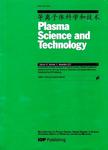Effect of Melting Iron-Based Alloy Temperature on Carbon Content Observed in Laser-Induced Breakdown Spectroscopy
Effect of Melting Iron-Based Alloy Temperature on Carbon Content Observed in Laser-Induced Breakdown Spectroscopy作者机构:Changchun University of Technology
出 版 物:《Plasma Science and Technology》 (等离子体科学和技术(英文版))
年 卷 期:2015年第17卷第11期
页 面:933-937页
核心收录:
学科分类:08[工学] 0805[工学-材料科学与工程(可授工学、理学学位)] 080502[工学-材料学] 0702[理学-物理学]
基 金:supported by National Natural Science Foundation of China(No.51374040) supported by Laser-Induced Plasma Spectroscopy Equipment Development and Application,China(No.2014YQ120351)
主 题:laser-induced breakdown spectroscopy (LIBS) molten ferroalloy carbon content sample temperature
摘 要:Our recent work has determined the carbon content in a melting ferroalloy by laser- induced breakdown spectroscopy (LIBS). The emission spectrum of carbon that we obtained in the laboratory is suitable for carbon content determination in a melting ferroalloy but we cannot get the expected results when this method is applied in industrial conditions: there is always an unacceptable error of around 4% between the actual value and the measured value. By comparing the measurement condition in the industrial condition with that in the laboratory, the results show that the temperature of the molten ferroalloy samples to be measured is constant under laboratory conditions while it decreases gradually under industrial conditions. However, temperature has a considerable impact on the measurement of carbon content, and this is the reason why there is always an error between the actual value and the measured value. In this paper we compare the errors of carbon content determination at different temperatures to find the optimum reference temperature range which can fit the requirements better in industrial conditions and, hence, make the measurement more accurate. The results of the comparative analyses show that the measured value of the carbon content in molten state (1620 K) is consistent with the nominal value of the solid standard sample (error within 0.7%). In fact, it is the most accurate measurement in the solid state. Based on this, we can effectively improve the accuracy of measurements in laboratory and can provide a reference standard of temperature for the measurement in industrial conditions.



